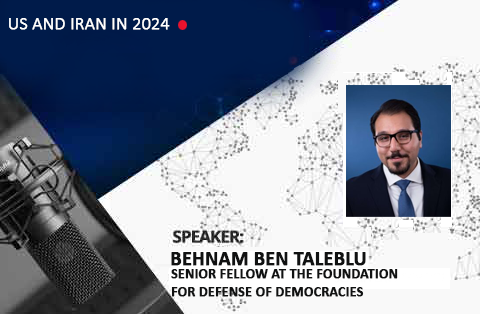http://www.washingtonpost.com/wp-dyn/content/article/2008/12/31/AR2008123102773.html?sub=AR
After Israel’s dramatic airstrikes, the world’s media are filled with images of suffering Palestinian women and children, innocent victims in what is being referred to as a renewed cycle of violence. Predictably, both sides are being urged to call a halt, though in much of the Middle East and parts of Europe these demands, and the blame, fall especially heavily upon the Israelis. In America, there is relatively greater understanding and sympathy for Israel, but here, too, concern is growing about the violence.
While the details of the conflict often appear complex, the fundamentals — hard truths about Gaza, its Hamas rulers and the wider Israeli-Palestinian conflict — are straightforward. First, despite the tragic deaths of civilians, Israeli’s airstrikes have been precisely aimed at Hamas fighters, installations and rocket launchers. Inevitably, the use of force causes injury and death to innocents, but from initial figures announced by U.N. personnel, it appears that more than 80 percent of those killed were Hamas security personnel or other militants — a ratio that might compare favorably with the use of force by U.S. and NATO troops in Afghanistan. In view of Hamas’s practice of deliberately placing missile launchers and other weapons in the midst of densely populated areas, the precision is remarkable. It also reflects the fact that the Israel Defense Forces (IDF) seek to minimize civilian deaths, while Hamas deliberately targets civilians.
Second, what we are witnessing is not a “cycle” of violence. The IDF airstrikes are a reaction to the unrelenting rocket and mortar attacks against the Jewish state. Israel withdrew from Gaza in 2005 in the hope that the Palestinians would use the opportunity to prepare for an eventual agreement and a two-state solution in which they would live side by side in peace with Israel. Since then, there have been more than 3,500 such attacks aimed at areas of southern Israel, including over 200 launches since Dec. 19, after Hamas chose not to extend a six-month truce. The expanding range of these missiles now covers an area populated by as many as 700,000 Israelis.
Third, Israel and Hamas have profoundly different aims. Israel has accepted the principle of a two-state solution as the basis for ending the conflict. Hamas, by contrast, rejects this. Its language of “resistance” or “ending occupation” (even though no Israelis, civilian or military, other than the kidnapped soldier Gilad Shalit, have “occupied” Gaza for the past three years) is but a veiled expression of Hamas’s actual objective: destroying Israel and creating an Islamist Palestinian state in its place. Credulous observers may see more peaceful purposes, but Hamas leaders periodically reassert these objectives, whether in the Hamas covenant or, in the words of a prominent Hamas cleric, Muhsen Abu ‘Ita, speaking on Al-Aqsa TV and calling for “the annihilation of the Jews here in Palestine.”
Fourth, any realistic hope of progress toward a peaceful resolution of the Israeli-Palestinian conflict and a successful two-state solution requires that Hamas suffer a severe setback in the present fighting in ways that seriously damage its capabilities and weaken its political credibility among Palestinians. Leading officials of Egypt, Saudi Arabia and the Palestinian Authority know this and, notwithstanding their formulaic criticisms of Israel, have explicitly blamed Hamas for the current violence. PLO and Fatah officials fault Hamas for the deaths in Gaza, and an adviser to Palestinian President Mahmoud Abbas, Nimr Hammad, told the Lebanese newspaper Al-Akhbar: “The one responsible for the massacres is Hamas, and not the Zionist entity, which in its own view reacted to the firing of Palestinian missiles.” Indeed, Hamas’s position as a radical, terrorist, adventurist, Islamist organization is underscored by the absence of support for it by Muslim governments other than Iran and its surrogates.
Successful negotiations between Palestinians and Israelis remain highly desirable, but their achievement would require that a single credible Palestinian authority (“one authority, one gun, one law,” as Abbas puts it) be able to speak on behalf of its people, represent them in difficult but meaningful negotiations, and possess the capacity as well as the will to enforce its side of a binding agreement. But Hamas represents an alternative source of authority and a direct challenge to the existing Palestinian leadership in the West Bank, while also — through its non-recognition of Israel, its support for terrorism and its refusal to accept prior negotiated agreements — rejecting even the most basic prerequisites for negotiations.
Egypt and Jordan have made peace with Israel, not because they embraced the ideas of Theodor Herzl, the founder of modern Zionism, but because they concluded that the effort to destroy the Jewish state had failed and that refusing to come to terms with it was harmful to their national interests. Ultimately, peace will be possible only if most Palestinians and their leaders become convinced that terrorism and violence are a dead end and that they cannot under any circumstances prevail over Israel through the use of force. If today’s conflict leaves a seriously weakened and politically damaged Hamas, that result is more likely to enhance the prospects for peace than to weaken them.
Robert J. Lieber, a professor of government and international affairs at Georgetown University, is most recently the author of “The American Era: Power and Strategy for the 21st Century.”



